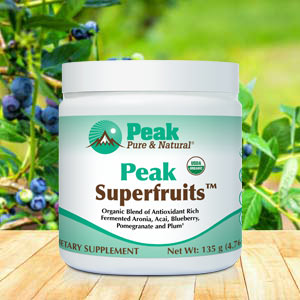Get Easy Health Digest™ in your inbox and don’t miss a thing when you subscribe today. Plus, get the free bonus report, Mother Nature’s Tips, Tricks and Remedies for Cholesterol, Blood Pressure & Blood Sugar as my way of saying welcome to the community!
The surprising reason behind red wine headaches

I used to bring a bottle of red wine to my book club every month. But I modified my habit after a new member joined that suffered from red wine headaches.
After that, I began bringing a bottle of sparkling cider along as well as my usual bottle of red.
My book club friend is far from alone. Turns out alcohol in general triggers headache in 37 percent of headache patients. And red wine in particular is a well-known migraine trigger.
Sufferers of red wine headaches usually experience the pain within 30 minutes to three hours after drinking even a small glass of red wine.
What exactly is it about red wine that sets off headaches? A team of University of California (UC) researchers decided to investigate…
Quercetin is the reason for red wine headaches
Turns out the culprit is a flavanol known as quercetin, one of the beneficial antioxidants that fights off the free radicals that can cause damaging inflammation in the body.
Quercetin has numerous health benefits. It lowers blood pressure, making it one of the reasons red wine is so good for your heart. Quercetin also helps support a healthy prostate and can lower the risk of cardiac arrhythmia and epilepsy.
Quercetin is found in all kinds of fruits and vegetables, including grapes, which is how it makes its way into red wine. And that’s where the trouble begins…
“When [quercetin] gets in your bloodstream, your body converts it to a different form called quercetin glucuronide,” says wine chemist and corresponding author Andrew Waterhouse, professor emeritus with the UC Davis Department of Viticulture and Enology. “In that form, it blocks the metabolism of alcohol.”
As a result, people can begin to accumulate the toxin acetaldehyde, a well-known irritant and inflammatory substance. “Researchers know that high levels of acetaldehyde can cause facial flushing, headache and nausea,” says lead author Apramita Devi, postdoctoral researcher with the UC Davis Department of Viticulture and Enology.
The medication disulfiram prescribed to alcoholics to prevent them from drinking causes these same symptoms. The drug also causes acetaldehyde to build up when an enzyme in the body would normally break it down.
This enzyme does not work well in about 40 percent of the East Asian population, allowing acetaldehyde to build up in their system.
“We postulate that when susceptible people consume wine with even modest amounts of quercetin, they develop headaches, particularly if they have a preexisting migraine or another primary headache condition,” says co-author Morris Levin, professor of neurology and director of the Headache Center at UC San Francisco (UCSF).
More sunlight, more quercetin
According to Waterhouse, because quercetin is produced by grapes in response to sunlight, the levels of this flavanol can vary dramatically in red wine.
“If you grow grapes with the clusters exposed, such as they do in the Napa Valley for their cabernets, you get much higher levels of quercetin,” he says. “In some cases, it can be four to five times higher.”
Wine-searcher.com reports that the varieties lowest in quercetin are Sagrantino and Tannat, and those highest include Cabernet Franc, Pino Noir and Nebbiolo.
Quercetin levels can also differ depending on how the wine is made, including skin contact during fermentation, fining processes and aging.
Next, the scientists will conduct a small clinical trial comparing red wines that contain a lot of quercetin with those that have very little to test their theory about red wine headaches on people.
Researchers hope the new study will help answer some of the questions remaining about red wine headaches. For instance, it’s still unclear why some people seem more susceptible than others. It could be because the enzymes of people who suffer from red wine headaches are more easily inhibited by quercetin. Or these sufferers could be more easily affected by the buildup of the toxin acetaldehyde.
Clearly, if you suffer from red wine headaches, you should avoid drinking it. But that’s no reason to avoid quercetin altogether. There are plenty of other sources for this flavanol that don’t contain alcohol and thus won’t have the same headache-inducing effect.
Some great sources for quercetin include capers, tomatoes, onions, tea, grapes, apples, broccoli, berries and green leafy vegetables. Or you can take a supplement if you’re worried you’re not getting enough quercetin from your diet.
Editor’s note: Did you know that when you take your body from acid to alkaline you can boost your energy, lose weight, soothe digestion, avoid illness and achieve wellness? Click here to discover The Alkaline Secret to Ultimate Vitality and revive your life today!
Sources:
Why do some people get headaches from drinking red wine? — ScienceDaily
Inhibition of ALDH2 by quercetin glucuronide suggests a new hypothesis to explain red wine headaches — Scientific Reports














